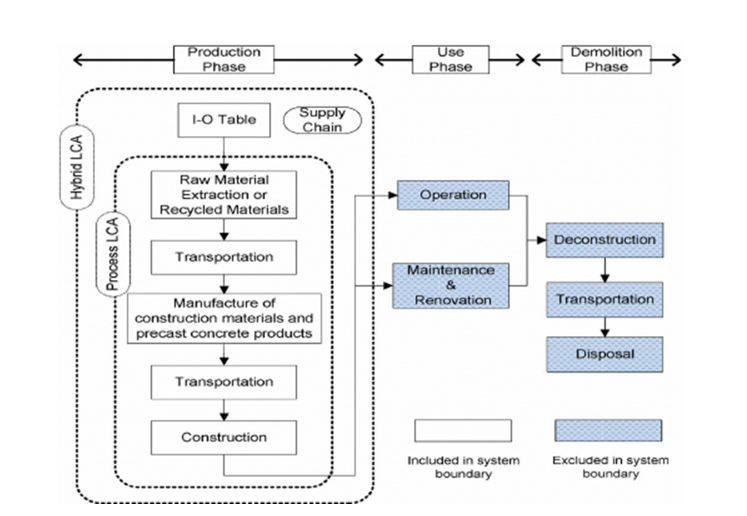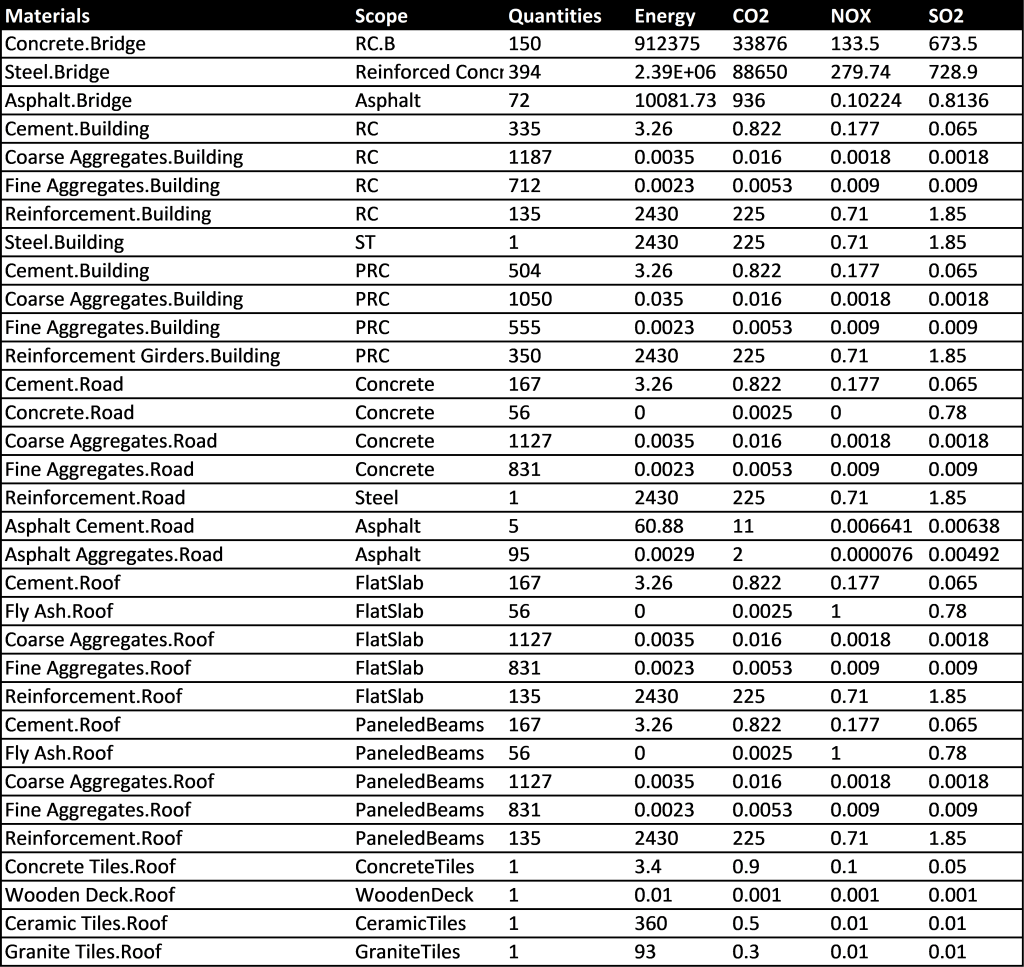Goal and Scope:
- Different design solutions for various civil engineering systems were studied and compared in the earlier project assignment. Based on how each system will affect the maintenance strategy and cost-effectiveness of each other, a preferred design choice was selected.
- This study’s goal is to evaluate an integrated civil engineering system made up of four such separate systems. The evaluation is done based on the cost-effectiveness, greenhouse emission, and the influence on the maintenance strategy. The stages of production, and maintenance and End of Life are taken into account for this. The comparison of various integration scenarios for the various maintenance strategies is the fundamental objective before selecting an integrated maintenance strategy.
- An overview of the project’s boundaries and scope for the Life Cycle Analysis can be seen in the accompanying figure.

The values for the energy demand, emission of greenhouse gases and environmental costs are computed based on the needed material amounts for each subsystem. Following are the values of the inventory that were considered during the integration of the system.

Each subsystem’s emissions were aggregated into a single data frame in order to account for the integrated system’s overall energy demand, emissions, and costs. Following are the results of the simulation for the integrated system
